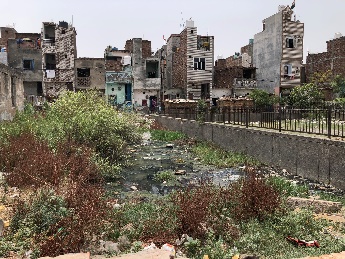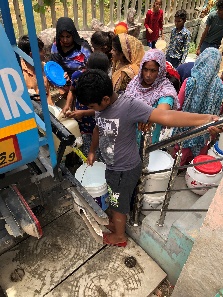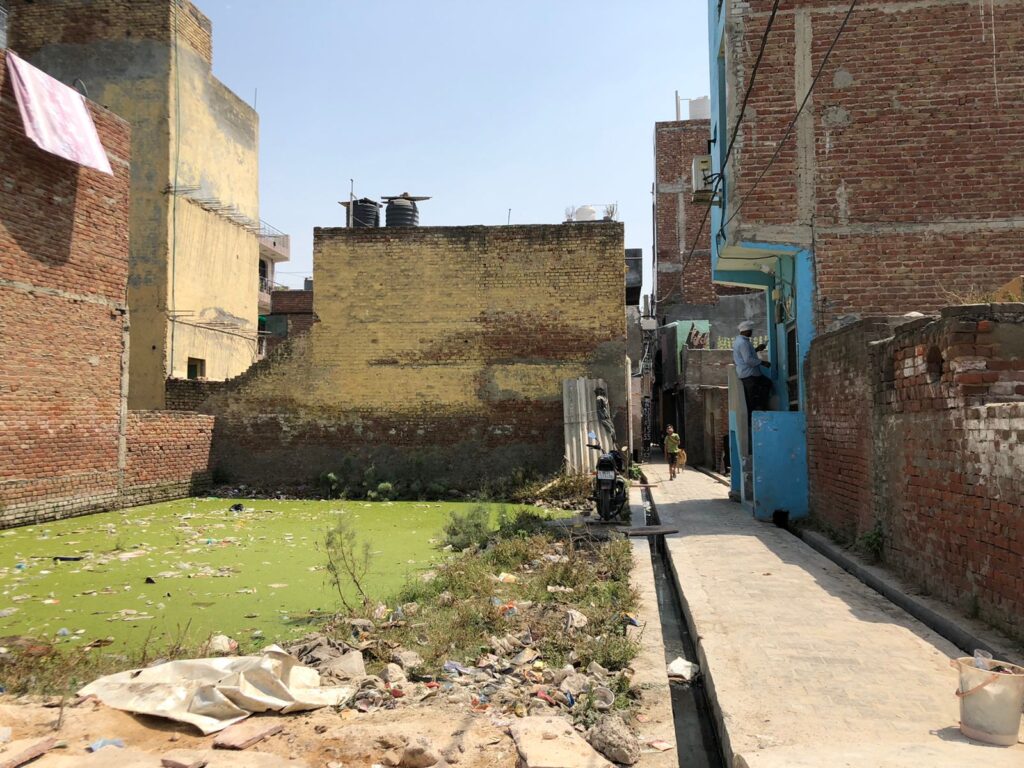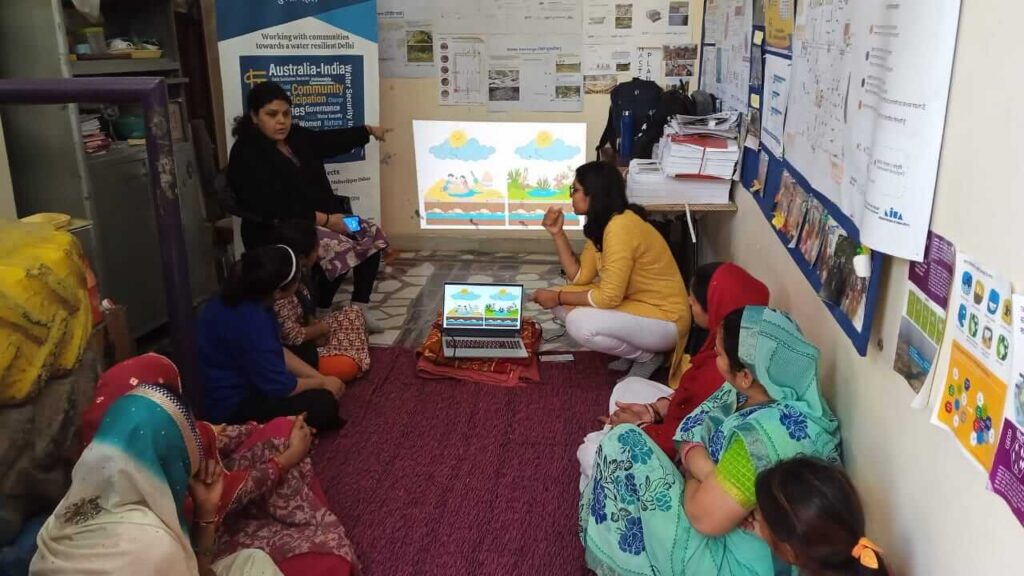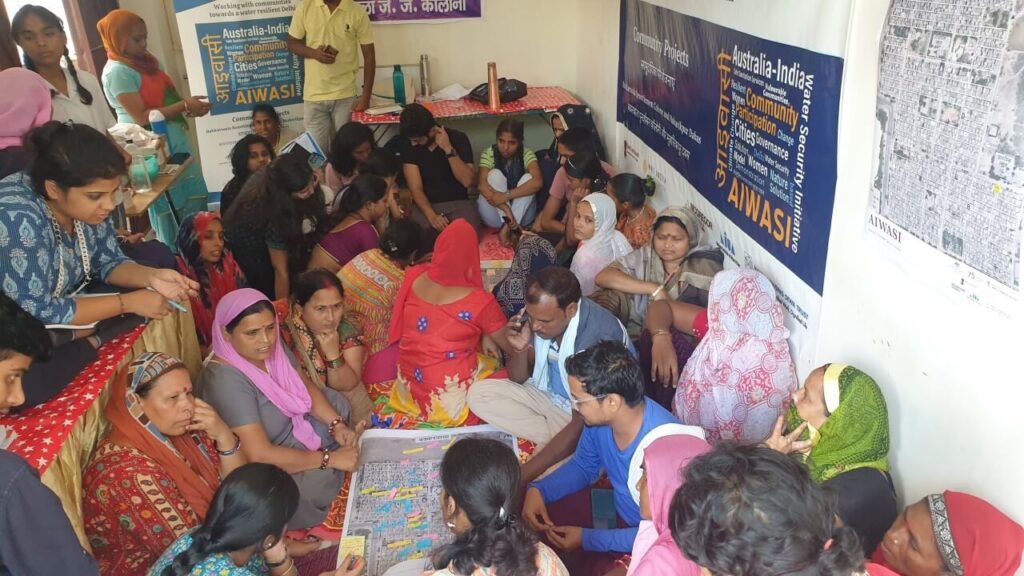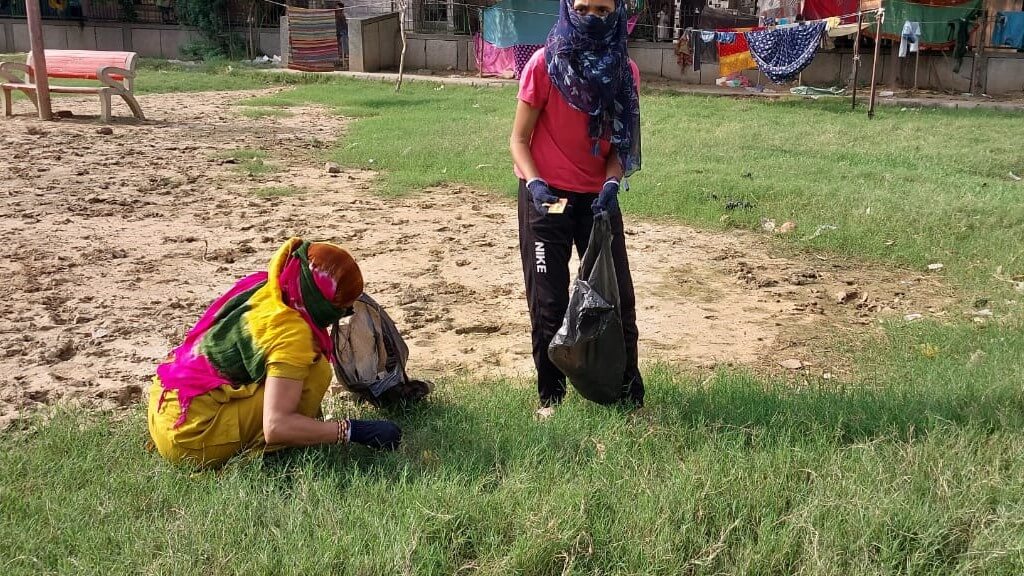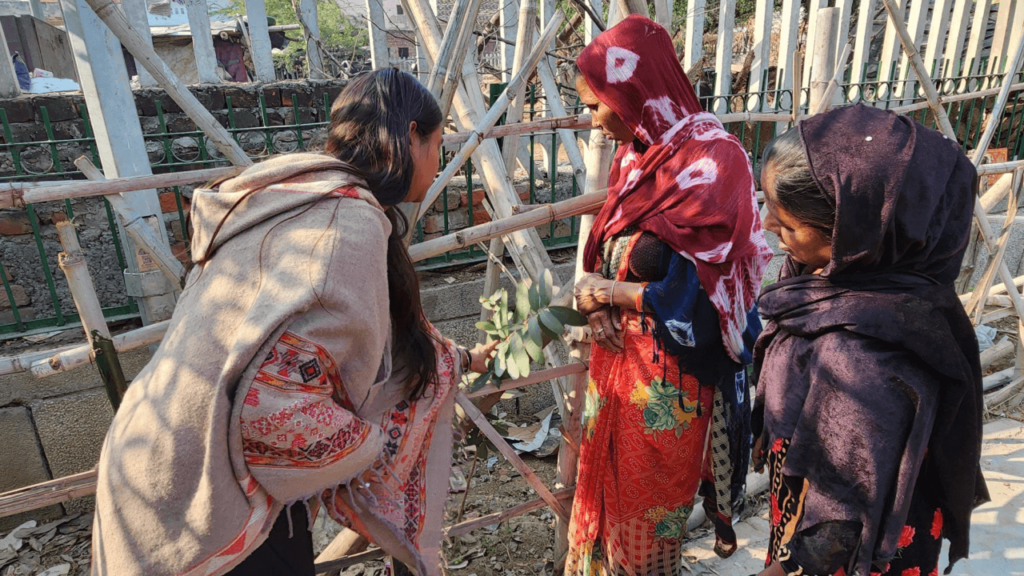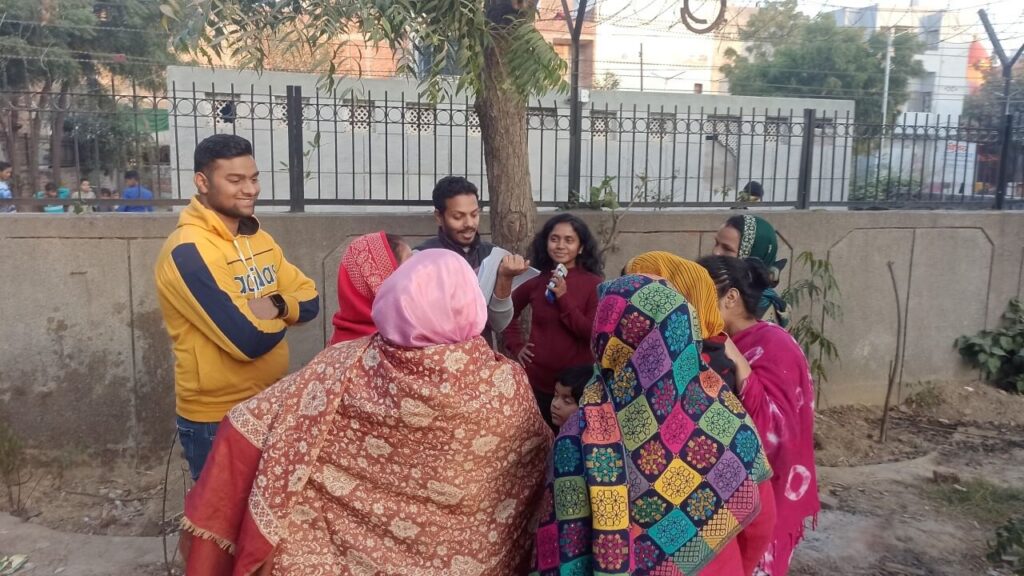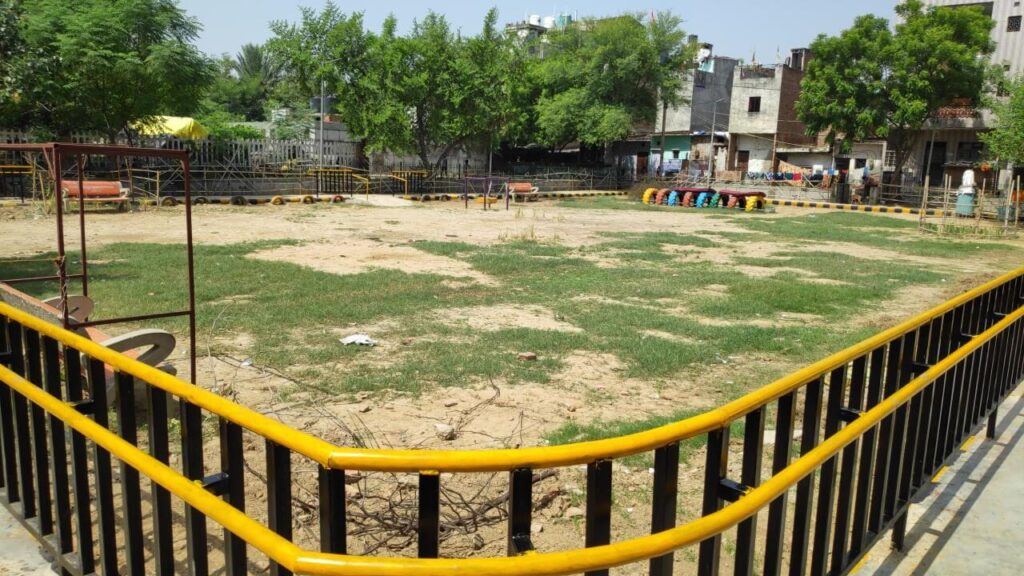Bakkarwala Resettlement Colony, New Delhi
The Bakkarwala Resettlement Colony site was chosen based on several factors such as geospatial analysis, location of the catchment etc. Several baseline household surveys were conducted to arrive at the selecting these two sites.
LOCATION
GEOGRAPHIC SETTING
The primary occupation within the settlement includes construction workers, domestic labourers, factory workers and street vendors. The community receives an average monthly income of INR 4,000-10,000. Many houses on the main streets have been rented out, or turned into small shops, while some vacant edges have been converted into small religious shrines. High groundwater level and water quality is hard, but it is still used for non-potable household chores.
COMMUNITY CONTEXT
The site is mainly occupied by Rajasthan, Gujarati and Bihari communities. These communities have been relocated as part of proposed developments around the Commonwealth Games held in 2010.
KEY COMMUNITY CHALLENGES
The overflows from the drain seep into the water storage tank, thus compro-mising the quality of water. This issue seems to be prevalent during monsoon.
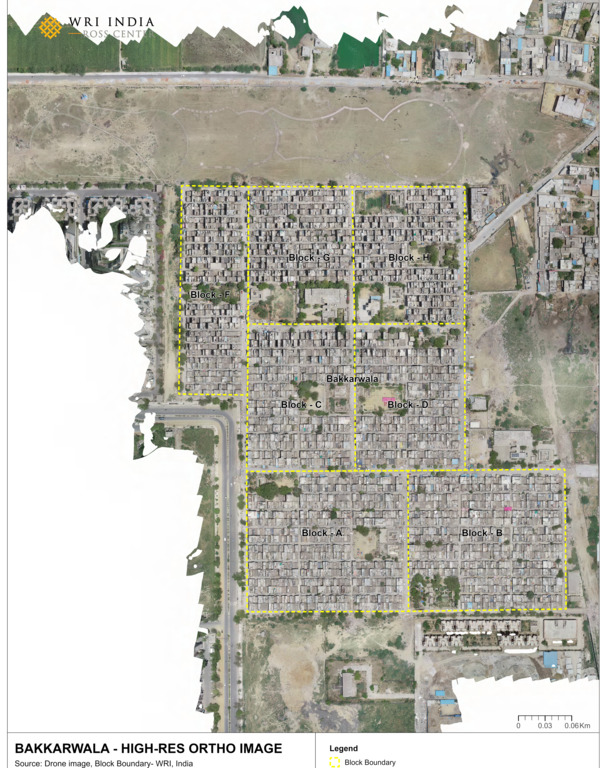
VISION
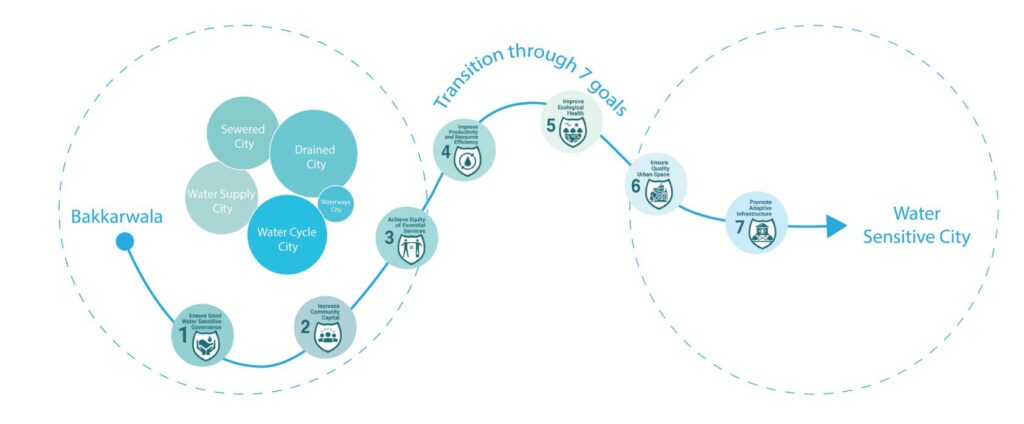
Types of Intervention
Facilitation intervention:
- Effective solid waste management through cleaning of open spaces, rectifying garbage tipper routes, raising complaints on 311 app.
- Sewage connections improved in households from 26% to 69% by leveraging government schemes.
- Prevention of vector borne diseases by raising complaints to authorities for maintenance of community spaces.
On-ground intervention:
- G-block community park rejuvenated as a universally accessible community space.
Empowering communities:
- Capacitated on themes of climate change, water cycle, water quality testing and vector borne disease.
- Trained to use the community-based vulnerability assessment tool to develop the community-based resilience action plan.
- Conducted community-led tree census activity to identify local flora within the area.



